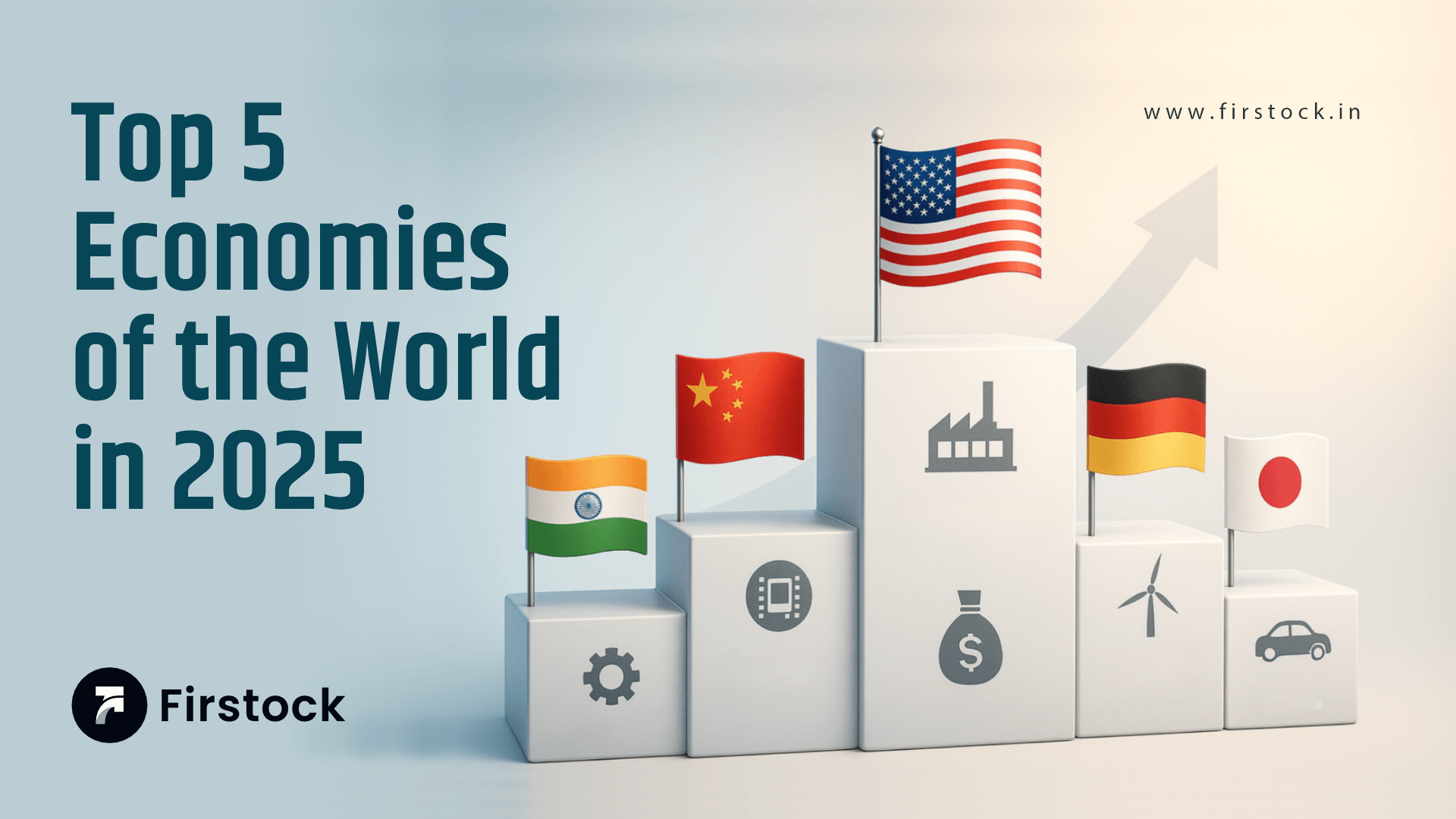Top 5 Economies of the World in 2025

As we move through 2025, the global economic landscape continues to evolve, shaped by technological innovation, geopolitical shifts, and macroeconomic trends. From inflation control to AI-led productivity booms, the top economies have demonstrated resilience and dynamism. This article breaks down the top 5 economies in the world based on GDP (nominal), while exploring the macroeconomic engines driving their performance.
1. United States
GDP (Nominal): ~$ 29.185 trillion (Dec 2024)
The United States remains the world's largest economy, underpinned by its innovation ecosystem, consumer-driven demand, and robust capital markets. Key macroeconomic indicators:
- GDP Growth Rate : 2.775% (avg of 2024 all Q4)
- Unemployment Rate: 4.1% (avg of all month data of 2024)
- Inflation Rate (YoY): 2.825% (avg of all month data of apr to mar 2024)
- Federal Funds Rate: 4.5% (Q1 of 2025)
Key Drivers:
- Strong tech and services sector (Apple, Google, Microsoft leading AI and cloud transformation)
- Record consumer spending supported by real wage growth
- Energy independence and leadership in clean tech
Risks:
- Elevated public debt (>120% of GDP)
- Political polarization and global de-dollarization trends
2. China
GDP (Nominal): ~$ 18.744 trillion (for 2024)
China holds second position with its mixed model of state-driven and private sector-led growth. The country has been refocusing on domestic consumption and high-tech manufacturing.
- GDP Growth Rate: 5% (avg of 2024 all Q4)
- Unemployment Rate: 5.125% (avg of apr 24 to mar 25)
- Inflation: 2.6% (avg of apr 24 to mar 25)
- Policy Rate (PBoC): 3% (June 2025)
Key Drivers:
- Global leader in EVs, solar, and battery storage technologies
- Belt and Road expansion and regional trade deals
- Investments in AI, chip-making, and digital yuan trials
Risks:
- Property sector overhang
- Demographic decline (aging population)
- Trade tensions with the U.S. and allies
3. Germany
GDP (Nominal): ~$ 4.660 trillion (for 2024)
As Europe’s largest economy, Germany remains the continent’s manufacturing and innovation hub. Post-energy crisis reforms and green investments have supported its rebound.
- GDP Growth Rate: -0.225% (avg of 2024 all Q4)
- Unemployment Rate: 6.067% (avg of apr 24 to mar 25)
- Inflation: 2.183% (avg of apr 24 to mar 25)
- ECB Main Refinancing Rate: 2.15% (jun 2025)
Key Drivers:
- Advanced manufacturing (auto, industrial automation)
- Green hydrogen and renewable energy infrastructure
- Stable export markets within EU and ASEAN
Risks:
- Dependence on Chinese demand
- Demographic pressures
- Energy transition costs
4. Japan
GDP (Nominal): ~$ 4.026 trillion (2024)
Despite population decline, Japan maintains a top-5 position with strong capital stock, technological sophistication, and robust export base.
- GDP Growth Rate: 0.3% (avg of 2024 all Q4)
- Unemployment Rate: 2.5083% (avg of apr 24 to mar 25)
- Inflation: 3.0416% (avg of apr 24 to mar 25)
- BOJ Policy Rate: 0.5% (June 2025)
Key Drivers:
- Robotics, semiconductors, and automotive exports
- Reopening of tourism and corporate capex growth
- Yen weakness boosting exports
Risks:
- Rising government debt (>260% of GDP)
- Aging labor force and productivity slowdown
5. India
GDP (Nominal): ~$ 3.913 trillion (2024)
India edges into the top five, driven by digital infrastructure, manufacturing reforms, and demographics.
- GDP Growth Rate: 6.725% (avg of 2024 all Q4)
- Unemployment Rate: 8.145% (avg of apr 24 to Feb 25)
- Inflation: 4.63% (avg of apr 24 to mar 25)
- Repo Rate: 5.5% (june 2025)
Key Drivers:
- Strong domestic consumption and digital payments ecosystem (UPI)
- PLI schemes driving manufacturing and electronics exports
- Youth population and rapid urbanization
Risks:
- Uneven job creation
- Infrastructure bottlenecks
- External shocks (oil prices, geopolitics)
Final Thoughts:
The global economic order in 2025 highlights the interplay between scale, innovation, demographic strength, and policy agility. While the U.S. and China maintain leadership through size and structure, India’s rise reflects long-term potential. Meanwhile, Germany and Japan exemplify developed economic resilience in a changing world.





